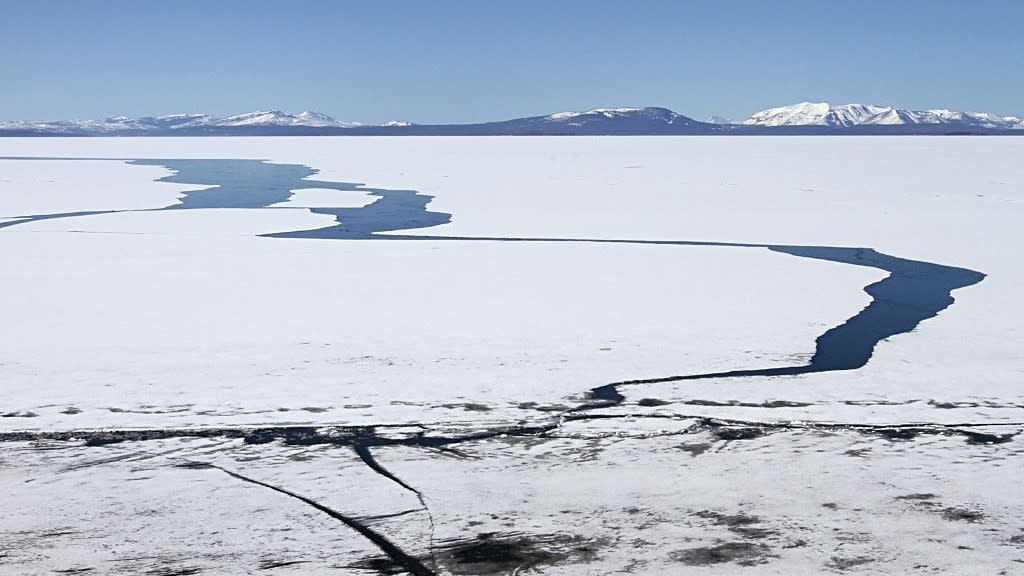Yellowstone Lake's weird resistance to climate change could be about to crack

In an unexpected discovery, scientists find climate change is yet to alter the ice cover on Yellowstone Lake. However, a tipping point may be coming for North America's largest high-altitude lake, researchers suggest in a new study.
Located roughly 7,733 feet (2,357 meters) above sea level in the heart of Yellowstone National Park and spanning 132 square miles (342 square kilometers), the lake usually freezes over in late December or early January and thaws toward the end of May.
Yet despite increasing ambient temperatures, the lake — unlike many others around the world — has not yet lost any of its ice cover during the colder months. While this may seem like cause for hope, researchers behind the new study have said it could be a sign that the lake may be due to cross a threshold where most of its ice is irreversibly lost.
Related: Climate change and polar ice melting could be impacting the length of Earth's day
Their peer-reviewed findings are due to be published in the journal Environmental Research Letters.
"We show that contrary to expectation, the ice phenology [seasonality] of Yellowstone Lake has been uniquely resistant to climate change," the scientists wrote in the study. "The unchanging ice phenology of Yellowstone Lake stands in stark contrast to similar lakes in the Northern Hemisphere."
Researchers used the full records of the lake's ice going back to 1931. By pairing these records with climate data from the same period and comparing them to similar high-altitude lakes in Europe, they were able to study how Yellowstone Lake had changed over time.
RELATED STORIES:
—How the runaway greenhouse gas effect can destroy a planet's habitability — including Earth's
— NASA's new 'Greenhouse Gas Center' tracks humanity's contribution to climate change
— 'Intruder' stars have changed Earth's climate over the eons. Here's how.
And it changed surprisingly little compared to others, despite temperatures at the lake increasing by 4.5 degrees Fahrenheit (2.5 degrees Celsius) between 1980 and 2018, and air temperature being a key driver of ice formation and break-up.
To explain the discrepancy, the researchers looked at the rate of spring snowfall over the lake. To their surprise, they found it had nearly doubled over the same timeframe. They believe that the increased snowfall has had a "buffering" effect on the region's ice loss.
But this may not be good news for the lake in the long term. If snowfall is maintaining the lake's ice cover, temperatures are likely to reach a point where the snow melts and the effect disappears — causing a sudden and irreversible tipping point in the lake's ice.
"Our results, paired with recent analyses of climate projections, suggest a 'tipping point' may be coming when ice phenology abruptly changes for Yellowstone Lake," they wrote. "This tipping point will largely stem from the ongoing shift from snow to rain-dominated precipitation regimes in the fall and spring."
